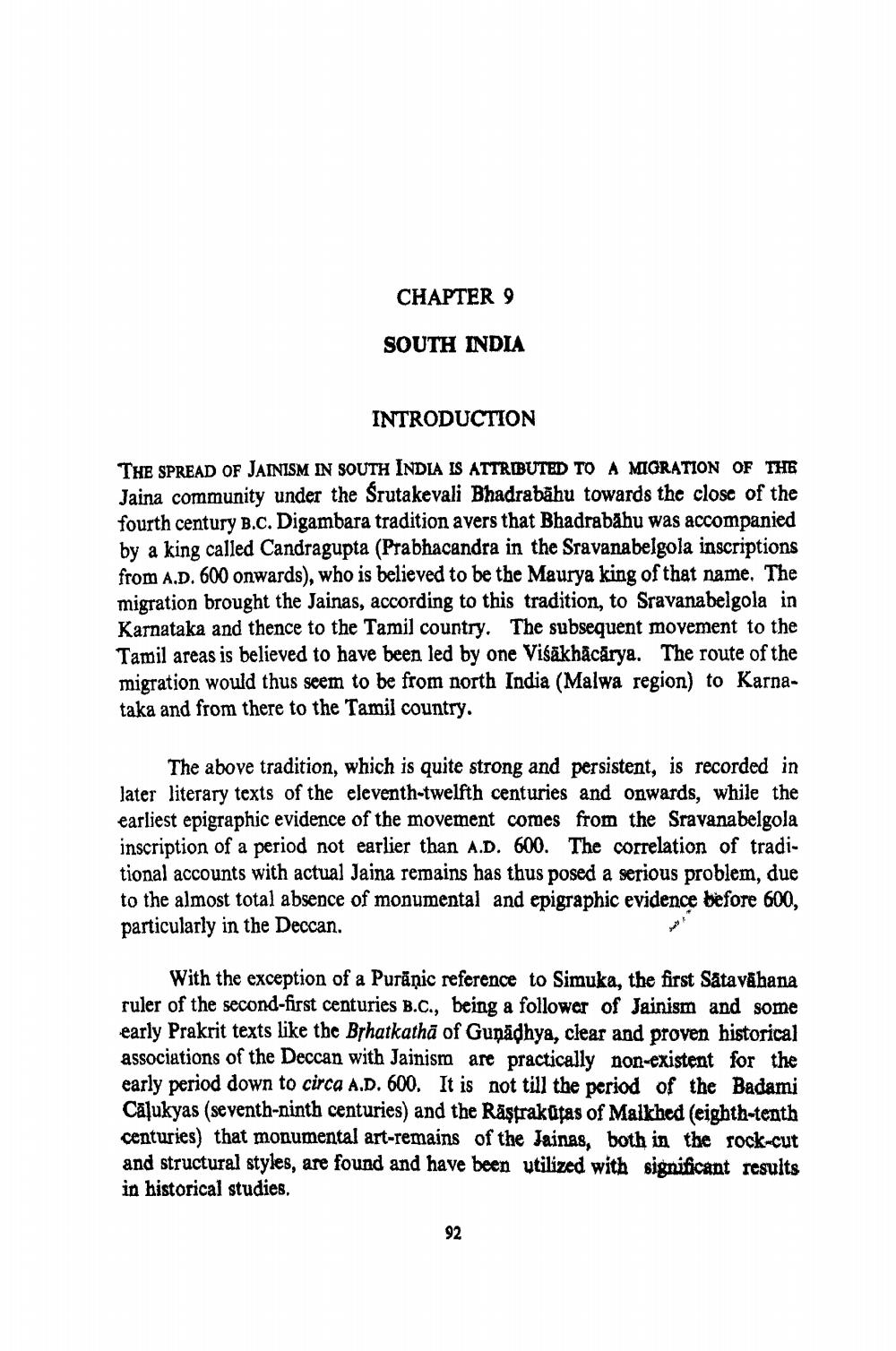________________
CHAPTER 9
SOUTH INDIA
INTRODUCTION
THE SPREAD OF JAINISM IN SOUTH INDIA IS ATTRIBUTED TO A MIGRATION OF THE Jaina community under the Śrutakevali Bhadrabahu towards the close of the fourth century B.C. Digambara tradition avers that Bhadrabahu was accompanied by a king called Candragupta (Prabhacandra in the Sravanabelgola inscriptions from A.D. 600 onwards), who is believed to be the Maurya king of that name. The migration brought the Jainas, according to this tradition, to Sravanabelgola in Karnataka and thence to the Tamil country. The subsequent movement to the Tamil areas is believed to have been led by one Visakhācārya. The route of the migration would thus seem to be from north India (Malwa region) to Karnataka and from there to the Tamil country.
The above tradition, which is quite strong and persistent, is recorded in later literary texts of the eleventh-twelfth centuries and onwards, while the earliest epigraphic evidence of the movement comes from the Sravanabelgola inscription of a period not earlier than A.D. 600. The correlation of traditional accounts with actual Jaina remains has thus posed a serious problem, due to the almost total absence of monumental and epigraphic evidence before 600, particularly in the Deccan.
With the exception of a Puranic reference to Simuka, the first Satavahana ruler of the second-first centuries B.C., being a follower of Jainism and some early Prakrit texts like the Brhatkatha of Gunadhya, clear and proven historical associations of the Deccan with Jainism are practically non-existent for the early period down to circa A.D. 600. It is not till the period of the Badami Calukyas (seventh-ninth centuries) and the Răştrakutas of Malkhed (eighth-tenth centuries) that monumental art-remains of the Jainas, both in the rock-cut and structural styles, are found and have been utilized with significant results in historical studies.
92




